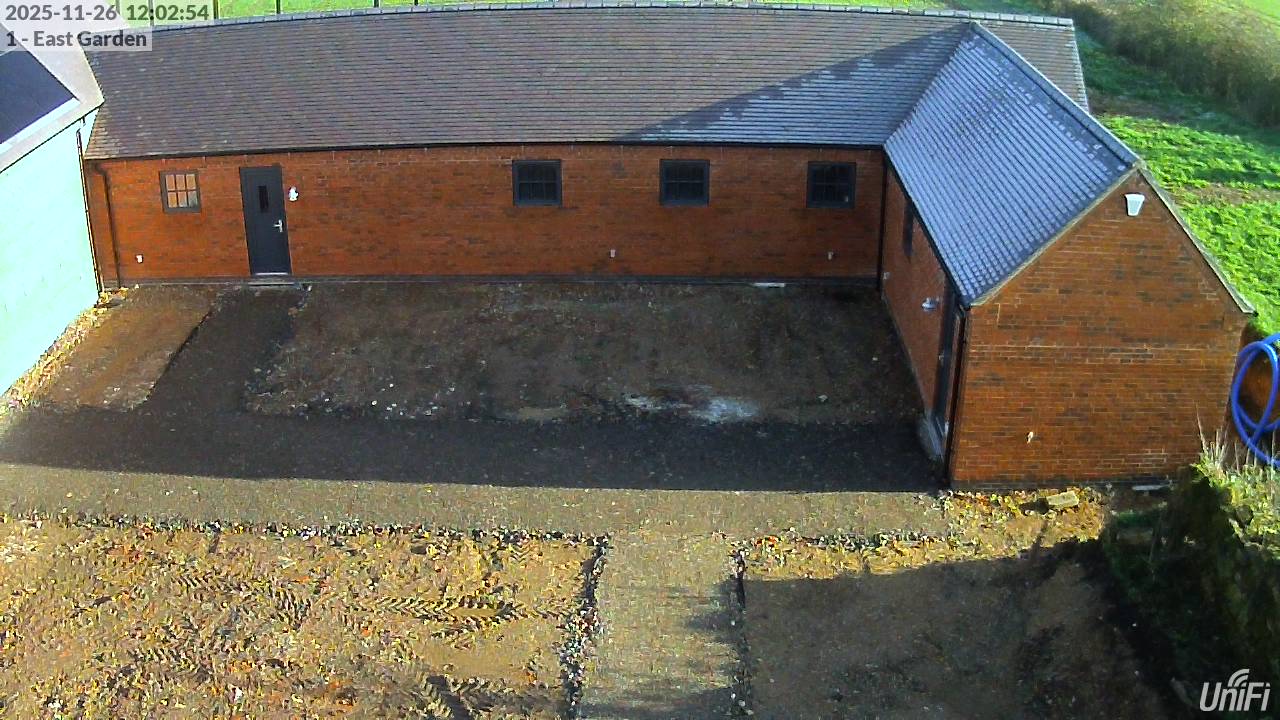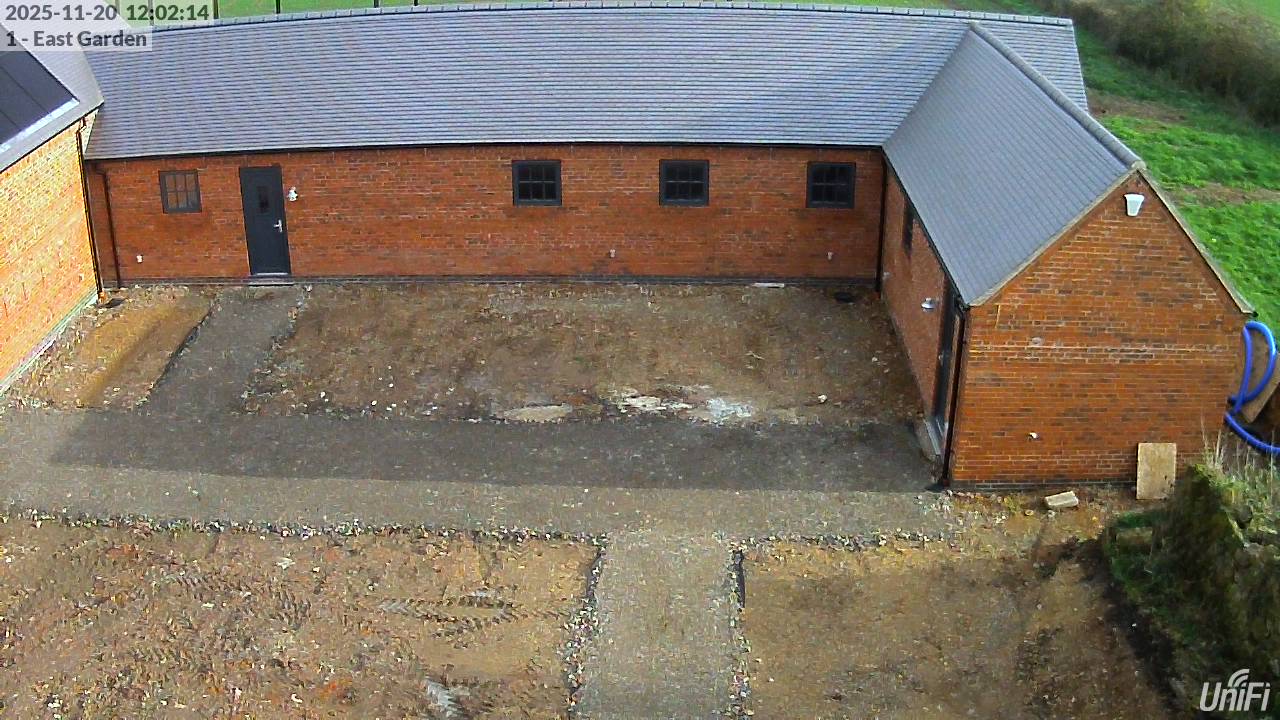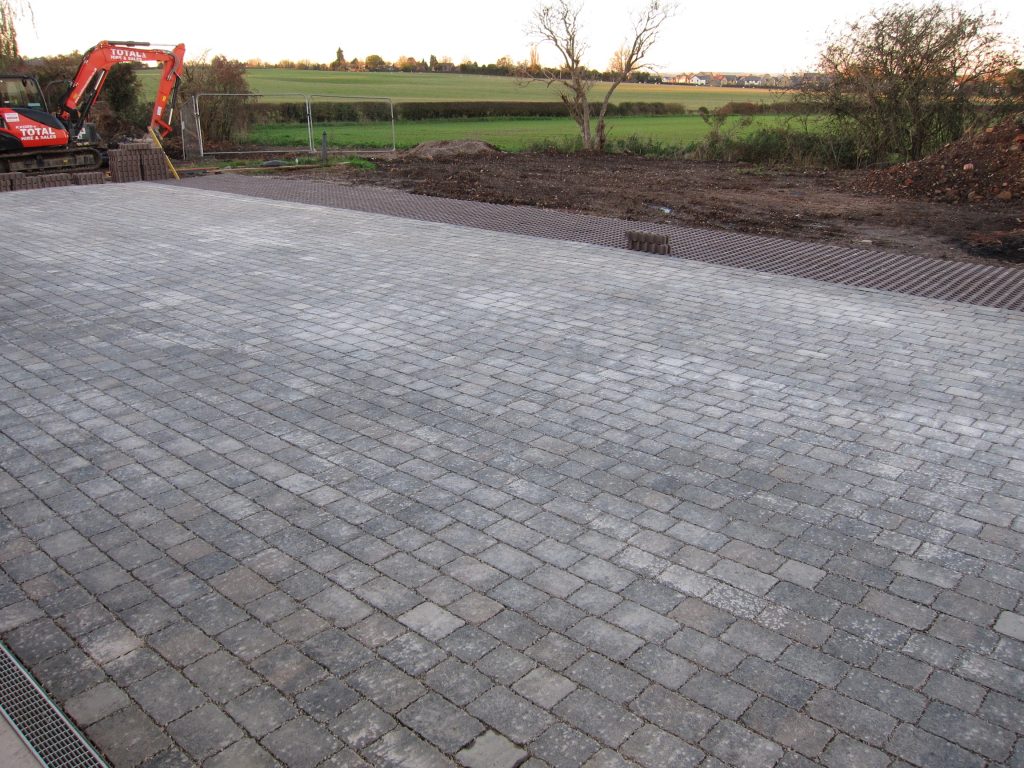
Another frosty night followed by a bright and sunny day, so still some frost visible on the Utility Room roof at noon (despite finding the loft insulation is mostly missing in there and needs to be topped-up).
Good progress on the rainwater attenuation pond:
- Levelling out the bottom so that – if anything – water will pool at the outlet end, whereas it has been tending to pool at the inlet end
- Installing the ‘swale inlet’ to calm the flow of water entering the pond, reducing the risk of erosion of the soil at the bottom of the pond in high-flow conditions
- Installing the silt trap that will help prevent silt entering the pond – containing a ‘bucket’ that will need emptying periodically
- Connecting to the upstream drainage pipework
The commissioning of the air-to-air heat pump is now mostly complete and all but one of the CCTV cameras are now operational. (The last camera will go up after the handrail for the external staircase gets installed, hopefully within the next week.)


